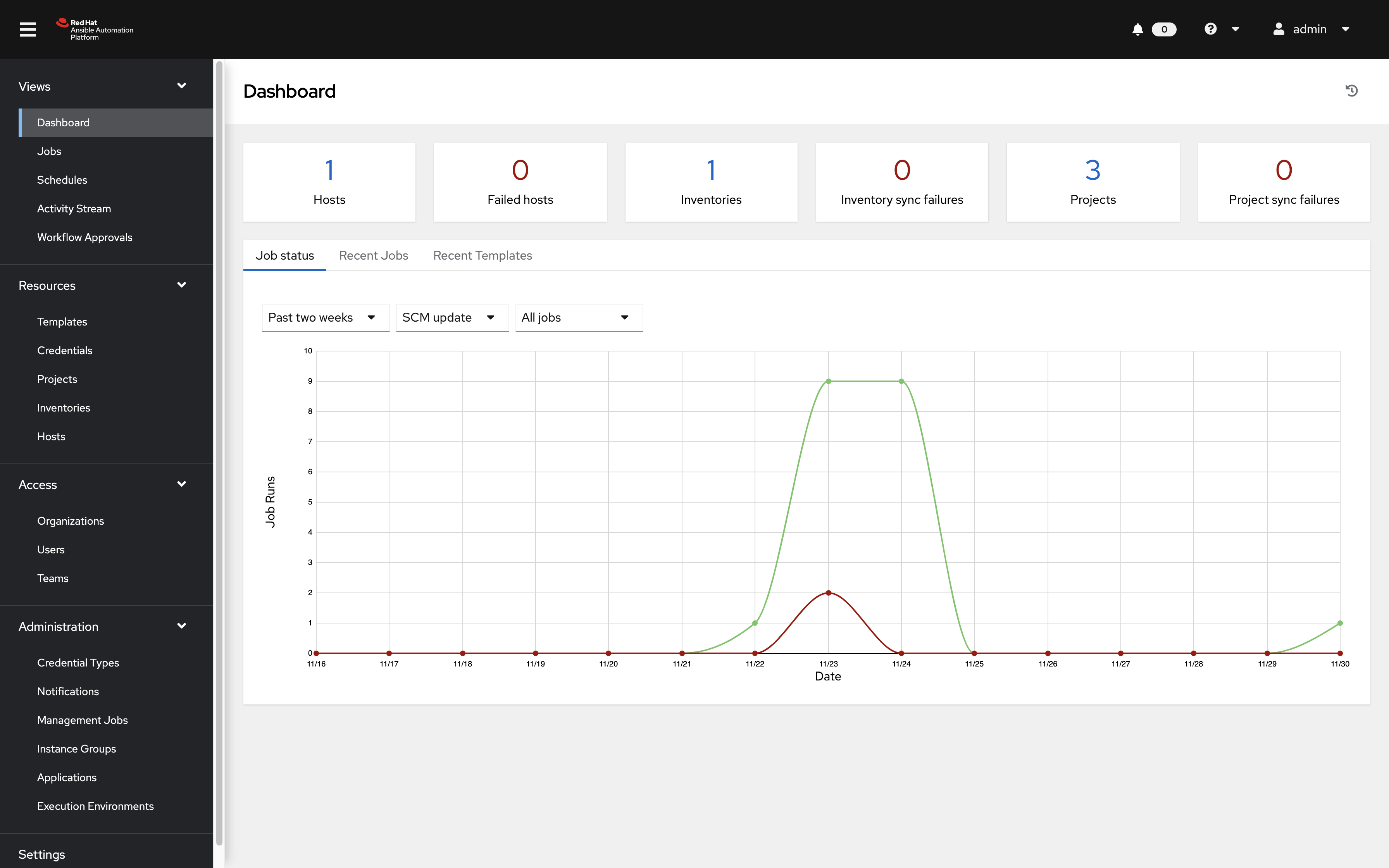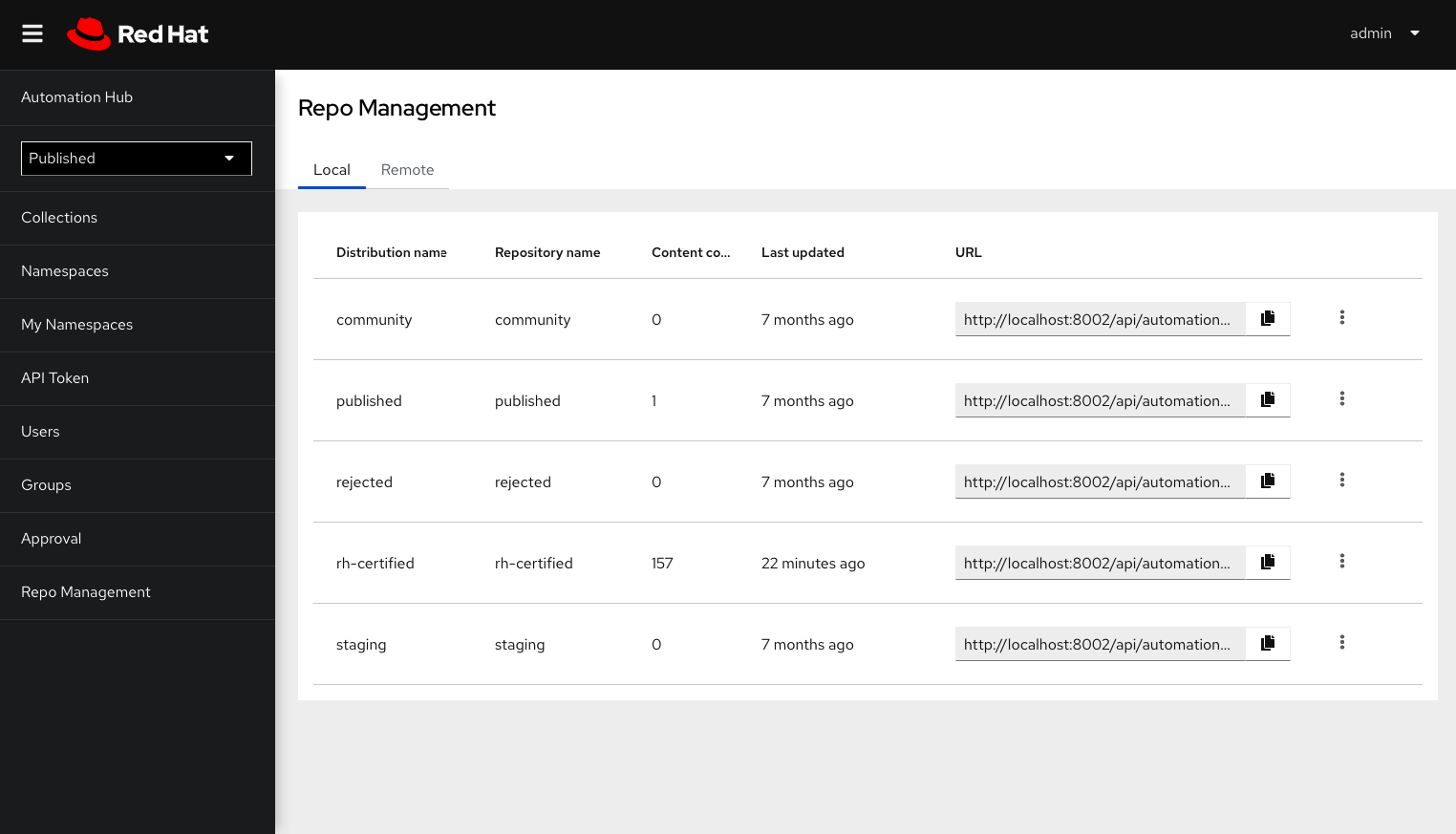What is included in Red Hat Ansible Automation Platform subscription?
Table of Contents
What is included in your Red Hat Ansible Automation Platform subscription?
Self-Hosted and/or on-premises components
For installation onto Red Hat Enterprise Linux (RHEL):
All software that is self-hosted (installed onto your equipment whether it is bare metal, virtual machines, or public cloud instances) is installed via the Ansible Automation Platform Installation Program as outlined in the documentation.
For installation onto Red Hat Openshift:
The Ansible Automation Platform Operator is only available on Ansible Automation Platform 2 and newer versions
This can be found in your Openshift OperatorHub, please refer to the documentation
Ansible Automation Platform is supported on both Red Hat Enterprise Linux 8/9 and Red Hat Openshift
For deployment onto Public Clouds:
- Red Hat Ansible Automation Platform available from AWS Marketplace - deployed on your AWS cloud
- Red Hat Ansible Automation Platform on Microsoft Azure - deployed in your Azure cloud and offered as a managed or self-managed application.
- Red Hat Ansible Automation Platform available from Google Cloud Marketplace - self-managed application deployed on your Google Cloud (self-managed only)
Automation controller
Automation controller is how you manage your automation with the Ansible Automation Platform. With automation controller you can centralize and control your IT infrastructure with a visual dashboard, role-based access control, job scheduling, integrated notifications and graphical inventory management. Easily embed automation controller into existing tools and processes with the REST API and a CLI.
https://www.ansible.com/products/controller

Event-Driven Ansible
Event-Driven Ansible provides the event-handling capability needed to automate time-consuming tasks and respond to changing conditions in any IT domain.
Event-Driven Ansible connects sources of events with corresponding actions via rules. Ansible Rulebooks define the event source and explain—in the form of conditional “if-this-then-that” instructions—the action to take when the event occurs. Based on the rulebook you design, Event-Driven Ansible recognizes the specified event, matches it with the appropriate action, and automatically executes it. Actions can optionally include executing existing Ansible Playbooks, templates, or modules to extend value from your trusted automation.
https://www.redhat.com/en/technologies/management/ansible/event-driven-ansible
Private automation hub
Allows automation creators to collaborate and publish their own automation content and streamline Ansible code within their own organizations. Organizations can now manage and control the lifecycle of their Ansible content as their needs scale across the hybrid cloud.
https://www.redhat.com/en/technologies/management/ansible/automation-hub
Private automation hub can also store execution environments. You can read more about Private automation hub here

Automation content navigator
The ansible-navigator tool is a CLI/TUI tool that is the primary interface for Ansible content developers to write and test Ansible playbooks with automation execution environments. This provides a consistent method to develop and execute Ansible content bound for automation controller. It uses execution environment containers as the foundational piece of the content development cycle, without having to worry about potential execution mismatches between a developer environment and production environment (Ansible automation controller).
Automation execution environments
Automation execution environments are container images that can be utilized as Ansible control nodes. They contain the Python package dependencies (for example: boto3 for Amazon Web Services), system level dependencies (for example: Linux packages gcc, jq) and Ansible content collections bundled with a version of ansible-core to create a self-contained runtime environment for your Ansible playbooks. Both command-line ansible-navigator and the WebUI/API driven automation controller can execute execution environments making it easier to go from creating and testing your automation playbooks to operatilizing and putting them into production quicker and more effortlessly.
https://www.redhat.com/en/technologies/management/ansible/automation-execution-environments
Execution environment builder
The ansible-builder command line tool that creates new execution environments or layers new required assets and dependencies into existing execution environment containers. This tool ensures all components needed for Ansible execution, such as Ansible Core, Python packages and all collections are added to the container.
Automation mesh
Automation Mesh is an overlay network for your automation infrastructure. The control plane (Automation controller) and the execution plane (Automation execution environments) can now be separated. With automation mesh, you can create execution nodes right next to what you are automating (for example a branch office in Johannesburg, South Africa) while execution is deployed on our automation controller in Durham, North Carolina.
https://www.redhat.com/en/technologies/management/ansible/automation-mesh
Ansible content tools
In addition to ansible-navigator and ansible-builder, there are additional fully-supported tools to help create automation content. For example, the command line tool ansible-test is included to help IT automators test their automation content. [documentation].
https://www.ansible.com/content-tools
Ansible Content Collections
Ansible Content Collections are a packaging standard for Ansible Automation Content. They can contain roles, modules, plugins and more. They lower your barrier of entry to automation with a consistent content delivery mechanism, including pre-built automation content from partners and Red Hat. Certified Content Collections are certified by Red Hat and supported by both Red Hat and partners.
https://www.ansible.com/products/content-collections
Hosted Services on console.redhat.com
Your Red Hat Ansible Automation Platform includes unlimited access to value-added hosted services for you automation:
- Automation analytics and Red Hat Insights for Red Hat Ansible Automation Platform
- Automation hub
Automation analytics and Red Hat Insights for Red Hat Ansible Automation Platform
With your subscription to Red Hat® Ansible® Automation Platform, you gain access to 2 tools that provide rich reporting and observability metrics: automation analytics and Red Hat Insights. Both help you track and manage your automation.
With automation analytics, you can measure the business impact of Ansible Automation Platform, such as your return on investment (ROI). You can see what you’re monitoring—and how it’s performing—so you can make informed, data-driven decisions and scale faster.
With Red Hat Insights, you can monitor your automation infrastructure—including the health status and configuration of systems. You can find and resolve problems, such as infrastructure performance issues, system availability, and security vulnerabilities. You can use notifications from Red Hat Insights as a data source to trigger automatic remediation through Event-Driven Ansible.
Automation hub
This hosted service is the official location to discover and download supported and certified Ansible Content Collections, included as part of your Ansible Automation Platform subscription. These content collections contain ways to consume automation, as well as how-to guides for implementing this content in your infrastructure.
https://www.redhat.com/en/technologies/management/ansible/automation-hub
Certified Content Partners and Collections
Support
Your Red Hat Ansible Automation Platform Subscription includes access to either standard 8x5 or premium 24x7 award winning support.
For more information on support please refer to the Red Hat support page:
https://www.redhat.com/en/services/support
*Support is not provided for self-support and trials;please speak to your Red Hat Account Team. If you are not sure who your account team is please contact Red Hat here: https://access.redhat.com/support/contact/sales
Online Expertise
Your Red Hat account and subscription also gets you access to (including trial subscriptions):
Value of a subscription
Learn how you can gain flexibility and innovation from open source—innovation that is reinforced with proven enterprise-grade quality and performance—and break free from lock-in.
Still not convinced on the value of a subscription? Please refer to the Red Hat page The value of a Red Hat subscription
Case Studies
Check out the numerous Red Hat Ansible Automation Platform success stories:
Check out our case studies
-
The Schwarz Group enhances Linux server management with Red Hat Ansible Automation Platform
- Blue Cross and Blue Shield of North Carolina was able to reduce a VM provisioning process from 20 hours per VM to 30 minutes per VM, running more than 200,000 playbooks over two years
Trial Information
When using the Red Hat Ansible Automation Platform Trial, found at https://red.ht/try_ansible there are two parts provided by the trial website:
-
The download for Ansible Automation Platform. This includes all the on-premises components as identified above (Automation controller, Private Automation Hub, ansible-navigator, ansible-builder, etc)
-
Entitlements for Ansible Automation Platform.
The entitlements will show under your Red Hat Subscription Management on https://access.redhat.com. The entitlements will show up shortly after activating your subscription (or trial subscription).

Once Red Hat Ansible Automation Platform subscription shows up, your account will allow you to access hosted services on https://console.redhat.com
Red Hat Enterprise Linux Subscription Information
Red Hat Ansible Automation Platform Infrastructure Subscription provides a qty of 10 Red Hat Enterprise Linux instances - MCT4022
For Ansible Automation Platform 2+, which includes Automation controller 4+ (formerly Ansible Tower) will only support running on RHEL 8+. Red Hat Ansible Automation Platform Infrastructure Subscription provides a quantity of ten (10) RHEL instances. Each MCT4022 subscription covers 1 system, regardless of if it is physical or virtual and regardless of sockets. It is a straight count. So MCT4022 covers 10 physical servers or 10 virtual nodes and is for the sole purpose for the customer to only run Ansible Automation Platform. MCT4022 is added automatically to a customer's account upon order fulfillment.


Comments